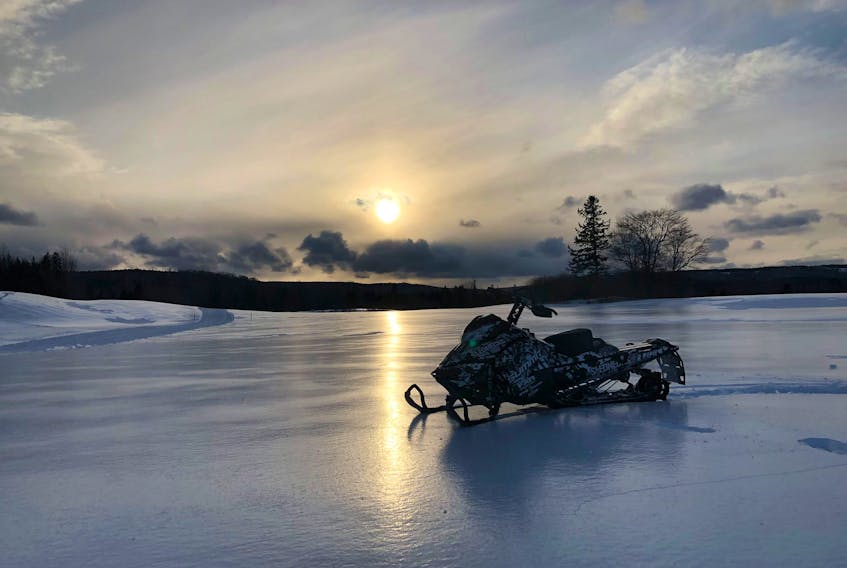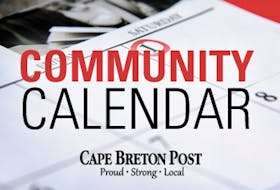ANTIGONISH, N.S. — Trails live long lives.
But even old highways and forgotten railbeds get bored in retirement. They need to be followed. This winter, the member clubs of the Snowmobilers Association of Nova Scotia (SANS) are hoping for enough snow to put old paths to use for another season of sledding in the Strait.
SANS represents about 2,100 snowmobilers divided between its 21 member clubs. The organization acts as a central hub, administering the trail pass program and ensuring revenues from the passes, which cost $200 for the season and are divided fairly among the clubs. They also negotiate with private landowners for access to trails that cross their property, among other things.
“If you join the snowmobile club, the membership you purchase is in the club, but it’s a provincial membership. You get a card, SANS provides them to us,” says Jerome MacEachern of the Inverness Capers. “So you become a member of the provincial association by default when you join the snowmobile club. They provide an umbrella group and some administrative stuff. The clubs are responsible for trail maintenance and development and grooming, of course.”
Grooming and development is no small task, considering there are more than 3,500 kilometres of trail in Nova Scotia. This represents the largest expense for clubs. It’s not as though trails are packed away each winter somewhere to be brought out for snowmobiling season. They are changed by spring floods and summer rain, washouts and tree falls. Many snowmobile clubs partner with local ATV clubs to patrol and clear trails year-round. Nova Scotia’s variable winter weather poses its own challenges in-season.
“We have such wet snows and freezing rain so the conditions change all the time. Every time we have one of those events, trees will be down across the trail,” says Jeremy Landry, president of the Antigonish Sno-Dogs. “Before we can go out to actually get the snow groomed we’ve got some significant trail work to do.”

Depending on the trails in their area, clubs adopt different maintenance strategies. The Capers’ 120 kilometres of trail are relatively broad and clear, so they can employ a $300,000 grooming machine well suited to old pulp roads. The Chedabucto Snowmobile Club has a network consisting primarily of smaller trails, requiring some ingenuity to groom properly.
“We bought a 48-inch drag out of Quebec and we pull it with a snowmobile,” says Philip Connolly, president of the Chebucto club. “Dermot Chisholm, he turned around and made a couple others just like the one we bought. And actually, it’s even better, because it’s stronger.”
The Weather Network is calling for a snowy winter in the Atlantic provinces, but snow by itself isn’t enough. It isn’t enough to groom a trail with a view to today or tomorrow, they need to be cared for in the hope of getting a full season out of them. There’s a science to it.
“You have to have the right ambient temperature, the right moisture content, the snow needs to be set up properly to groom it to get a proper base,” says Kevin Morse, vice-president of the Antigonish Sno-Dogs. “When you first go out for the year you're trying to develop a base that you can maintain over the season. It’ll help if machines are out running on it, because it helps to pack it, agitates it and gets the air out of it.”
Snowmobiling in the region seems to be primarily a local pastime, at least at the level of SANS. Clubs see visitors from neighbouring counties running the connected trails. On a clear day, on a groomed trail, they’re sharing a chance to get away and clear their heads.
“I've been doing it since 1979, so I have a long history in it,” says MacEachern. “I just enjoy the outdoors. I run a business, so if you get out on the trails for the day it’s a bit of a stress reliever. You can get away from things, enjoy the countryside.”
Although most people think of machines blazing through powder, for some riders, it's an experience more akin to a walk in the woods.
“I wouldn’t be one to be going fast on the trails. I like going and looking at the country that you're travelling. That’s what I enjoy about it,” says Connolly. “It can be a family thing. There’s a lot of families that go out for a nice Sunday afternoon or Saturday afternoon, take a lunch with them and it’s a very enjoyable experience for little ones as well.”









